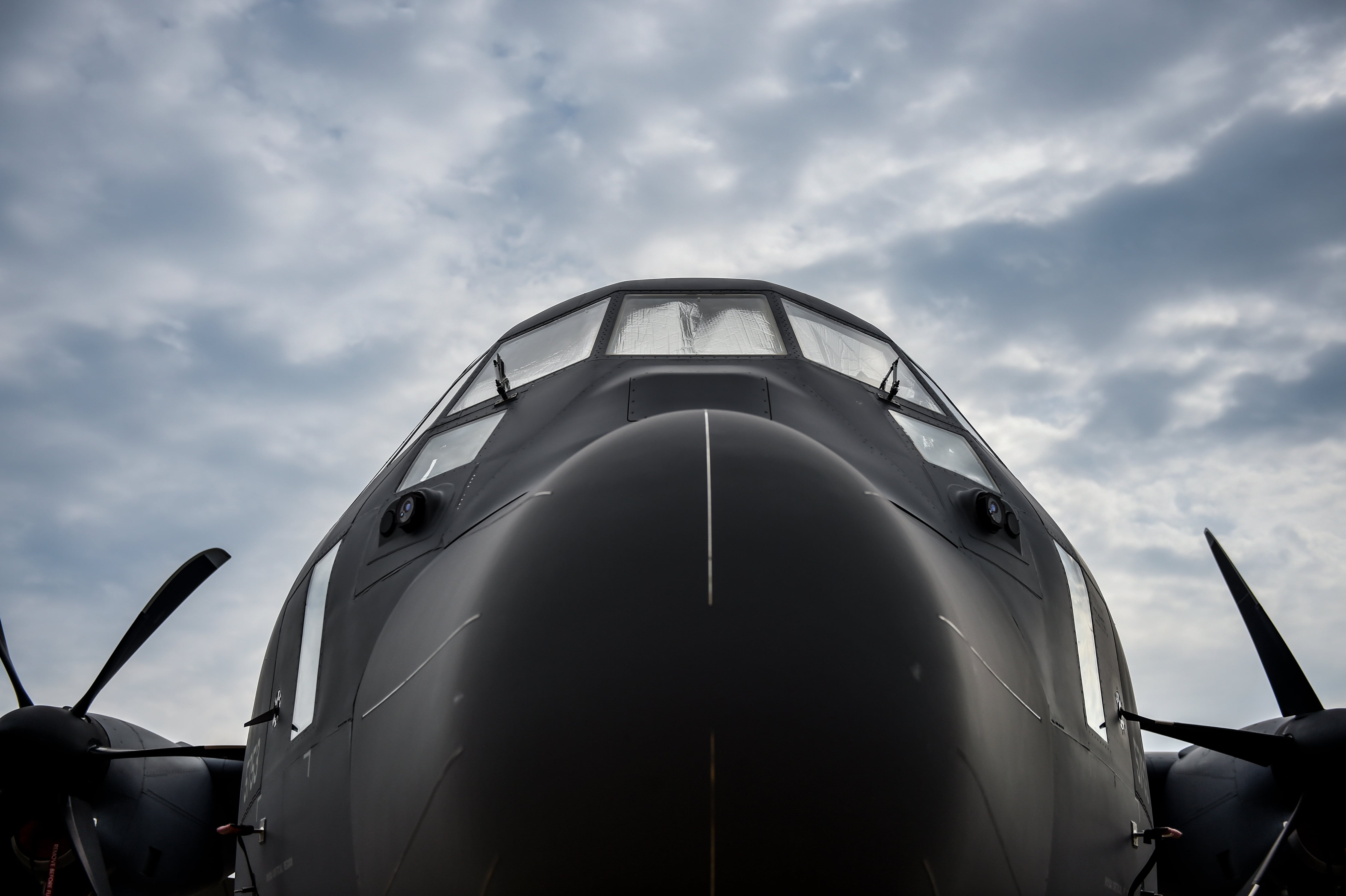Editor’s note: This story has been updated to reflect responses provided to Air Force Times by Air Force Special Operations Command.
The 30mm cannon on the Air Force’s next gunship is having multiple problems, limiting its ability to track targets and maintain a full and consistent rate of fire, according to a new Pentagon report.
But Air Force Special Operations Command said the issues highlighted by Pentagon investigators are either being addressed or aren’t a major problem, and that the AC-130J Ghostrider is on the right track.
“This aircraft has already performed well beyond expectations,” AFSOC spokesman Lt. Col. Pete Hughes said in an email Feb. 1. “None of the observations noted are show stoppers.”
Air Force leadership has championed the Ghostrider as “the ultimate battle plane,” and “a bomb truck with guns.”
With its two cannons, a slate of precision-guided munitions — which could include the Hellfire missile in the future — and ambitions to eventually add small drones and even a laser weapon, the Ghostrider is planned to be the most heavily armed gunship in history.
The Ghostrider’s 30mm cannon fires up to 200 Coca-Cola bottle-size rounds per minute — but it recoils so heavily it causes a “retrigger,” forcing the gun to automatically stop firing while it re-centers itself. The operator then has to release and re-pull the trigger to start shooting again, according to the Office of the Director of Operational Test and Evaluation in its fiscal 2017 report, released in January.
The retrigger happens when the 30mm’s recoil kicks it beyond a preset angular limit, known as a “tracking inhibit.” That shuts off the gun and starts the re-centering process.
This is not a problem on the legacy AC-130W Stinger II variant, testers said.
Hughes said AFSOC is “work[ing] out the kinks” of the 30mm. It’s essentially the same gun as on the AC-130W, he said, with equivalent accuracy requirements. As a result, AFSOC made some assumptions for the Ghostrider’s software development based on its experience with the 130W, he said.
But after firing the AC-130J, Hughes said, “those assumptions proved to not be entirely transferable.”
“The aircraft itself flexes differently, and the mount on the gun [is] slightly different,” Hughes said. “We continue to improve the operation of the gun as we work out the kinks of [the] new weapon system. Initial findings of both software and hardware gun mount upgrades are showing positive results.”
AFSOC continues to test the gun and gather data to create another software upgrade — slated for January 2019 — it believes will solve the problem.
The 30mm, which is a pallet-mounted, side-firing chain gun, is also having calibration problems. Its gun fire control system should compensate for altitude, slant range and ambient wind changes after it is calibrated, to make sure the first rounds fired are accurate.
But that’s not happening, testers said.
“Operators are unable to independently update the [fire control system’s] wind calibration factor without changing the inherent gun-mount calibration factor,” the report said.
That also isn’t a problem with the AC-130W, the report said.
Hughes said that all gunships have to adjust their guns’ calibration settings when changing altitudes, to factor in normal changes in environment.
AFSOC’s testing of the Ghostrider showed it needed to be able to update the wind factor independent of the mount factor. This was included in the latest software upgrade, Hughes said.
RELATED

The report also highlighted some problems with the Ghostrider’s massive 105mm cannon. The Air Force added panels to cover the cargo area floor of the modified MC-130J, to reduce the risk of air crew tripping. But those new panels are interfering with the loading of the 105mm shells, the report said.
And the 105mm ammunition rack doesn’t have a forward restraint, the report said, causing “an excessive number of rounds” to come loose.
AFSOC said the rack has a forward restraint, and problems with the rack were identified during testing and corrected.

The Pentagon report concluded that despite those “notable shortfalls,” the Ghostrider’s Block 20 configuration — which also includes wing-mounted GBU-39 Small Diameter Bombs and AGM-176 Griffin laser-guided missiles — can support most elements of the close-air support and air interdiction missions.
Live-fire tests of the Ghostrider showed the 105mm “demonstrated expected lethality against personnel, trucks and light armored vehicles.” Its Griffin missiles took out stationary and moving trucks and small boats.
But its 30mm round had mixed success. The report said it “demonstrated limited effectiveness against personnel in the open on soft ground, but is more effective against personnel on hard surfaces.”
A 30mm strike against a manikin on a concrete roof was deadlier and created more fragmentation damage than a strike on a plywood roof, because the round traveled through the plywood and detonated underneath, the report stated.
AFSOC said the Ghostrider’s 30mm PGU-46/B round meets its performance requirements, and its effectiveness is not an issue. The Marine Corps round is designed for anti-personnel and light targets, Hughes said.
The report also dinged the Ghostrider for its software complexity, inadequate training and technical manuals, and overall operating environment, which it said diminishes the aircraft’s usability.
The testers said the plane’s program office should upgrade the 30mm fire control system’s software to fix the accuracy and re-trigger problems before it is deployed.
Stephen Losey is the air warfare reporter for Defense News. He previously covered leadership and personnel issues at Air Force Times, and the Pentagon, special operations and air warfare at Military.com. He has traveled to the Middle East to cover U.S. Air Force operations.





